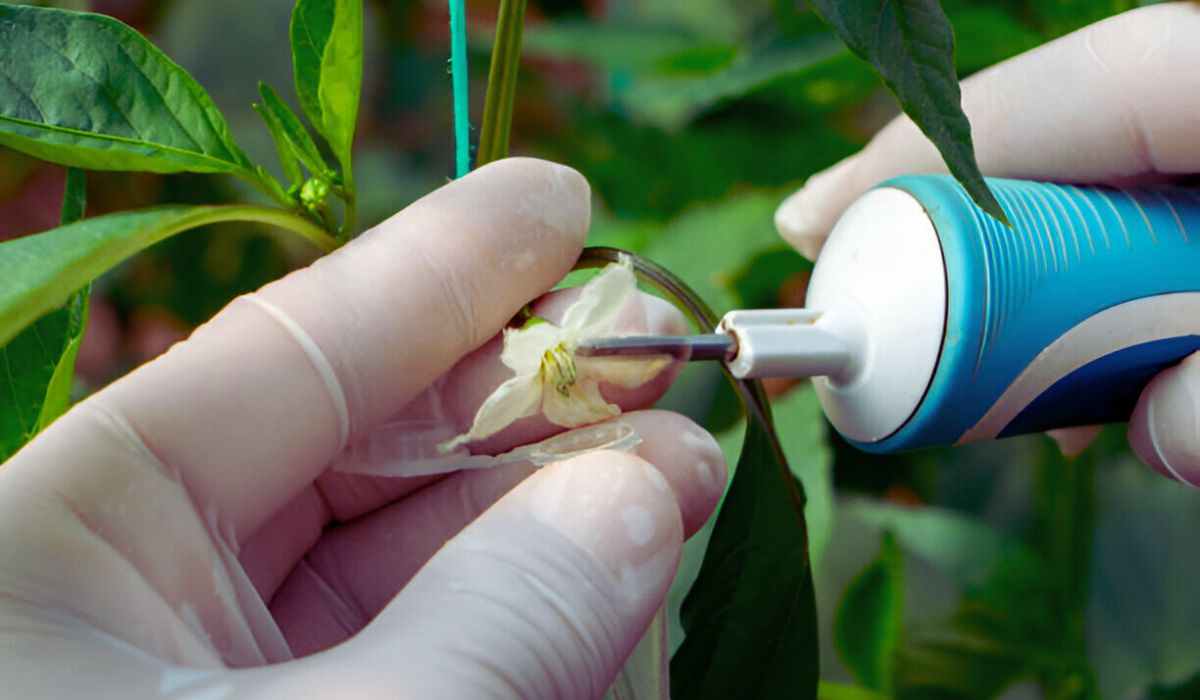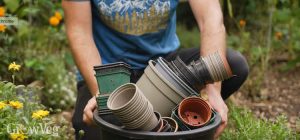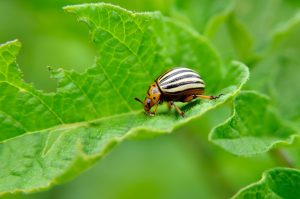Why Is Pollination Important for Tomatoes?
Tomato plants need pollination to produce fruit. Pollination happens when pollen, tiny dust-like particles, moves from the male part of the flower, the anther, to the female part, the stigma. In nature, wind and insects like bees, butterflies, and bumblebees facilitate this process.
What Happens If Pollination Fails?
If pollen does not move properly, tomato flowers may bloom but fail to develop fruit, a condition known as blossom drop. To prevent this, you can manually pollinate the flowers by hand and take additional measures to enhance natural pollination.
Are Tomatoes Self-Pollinating?
Yes, each tomato flower has both male and female parts, so it can pollinate itself. However, natural pollination may not always occur due to:
- Lack of wind, which is common in indoor, greenhouse, or enclosed spaces.
- Absence of pollinators due to pesticides or low bee populations.
- Excessive humidity, which causes pollen to clump together, making transfer difficult.
- Extreme dryness, which prevents pollen from sticking to the stigma.
How to Fix It: If these factors reduce pollination success, hand pollination ensures fruit formation and prevents yield loss.
To ensure healthy plant growth and prevent issues like tomato splitting, read our guide on how to prevent tomato splitting.
When Should You Hand Pollinate Tomatoes?
For best results, pollinate when the flowers are fully open, typically between late morning and early afternoon.
Avoid pollinating when:
- Flowers are wet with dew in the early morning.
- It has just rained, as wet pollen does not transfer well.
- The weather is extremely hot, as pollen dries out too quickly.
Pollinate on warm, dry days to maximize pollen viability and repeat for two to three days for higher success rates.
If you are growing tomatoes at home, check out our complete guide on how to grow tomatoes at home.
How to Pollinate Tomato Flowers by Hand
Step 1: Choose Dry Flowers
Ensure flowers are completely dry before attempting pollination.
Step 2: Move the Pollen
Finger Tap Method
Gently flick or tap the base of the flower to shake the pollen loose.
Best for outdoor gardens with mild wind.
Pencil or Cotton Swab Method
Lightly tap or brush the inside of the flower to move pollen from anther to stigma.
Best for small gardens or a few plants.
Electric Toothbrush Method
Hold a vibrating toothbrush near the back of the flower for a few seconds.
This simulates a bee’s buzz, which helps release pollen more effectively.
Best for greenhouse or indoor tomatoes.
Oscillating Fan Method
Place a small fan nearby to create airflow, shaking pollen loose naturally.
Best for large gardens or greenhouse setups.
Step 3: Repeat for Three Days
Hand pollinate every day for three consecutive days to increase the chances of success.
Tomato plant health is important for fruit development. If you are seeing yellowing leaves, learn why tomato leaves turn yellow.
How to Know If Pollination Was Successful
Signs of Successful Pollination:
- Flower petals fade, dry up, and fall off within 24 to 48 hours.
- A tiny green tomato appears at the base of the flower within a few days.
Signs of Unsuccessful Pollination:
- Flowers remain intact but eventually wither and fall off without forming fruit.
- No visible swelling at the base of the flower.
Other Ways to Improve Tomato Pollination
Attract More Pollinators
- Plant bee-friendly flowers nearby, such as lavender, marigold, and borage.
- Avoid using harmful pesticides that deter bees.
- Provide a shallow water source for pollinators in your garden.
Improve Airflow
- Gently shake the plant stems to distribute pollen.
- Use oscillating fans in greenhouses to mimic natural wind.
- Space tomato plants 12 to 24 inches apart to promote good air circulation.
If you are deciding between different tomato plant types, learn about indeterminate vs. determinate tomatoes.
Why Do I Have Flowers but No Tomatoes?
If your tomato plant has plenty of flowers but fails to produce fruit, temperature stress may be the issue.
Temperature Effects on Tomato Pollination
If temperatures rise above 90 degrees Fahrenheit during the day or above 75 degrees Fahrenheit at night, pollen becomes sterile and flowers will not set fruit.
Solutions
- Provide shade cloth in extreme heat.
- Water deeply in the early morning to cool plants.
- Use mulch to regulate soil temperature.
To ensure strong plant growth, using the right fertilizer is key. Check out our guide on the best tomato fertilizers.
Hand Pollination for Tomato Breeding and Seed Production
Hand pollination helps breed new tomato varieties. It involves moving pollen from one plant to another to create hybrids.
Dr. M. Ozores-Hampton says choosing two true-to-type varieties ensures expected traits in offspring.
Read more from Dr. M. Ozores-Hampton here.
Final Thoughts
Hand pollination is a powerful technique for ensuring consistent fruit production, especially in indoor, greenhouse, or unfavorable conditions. Whether you use a toothbrush, tapping, or airflow, this simple yet effective method guarantees a successful tomato harvest.
Try these expert-backed tips today and watch your tomato yield flourish.





